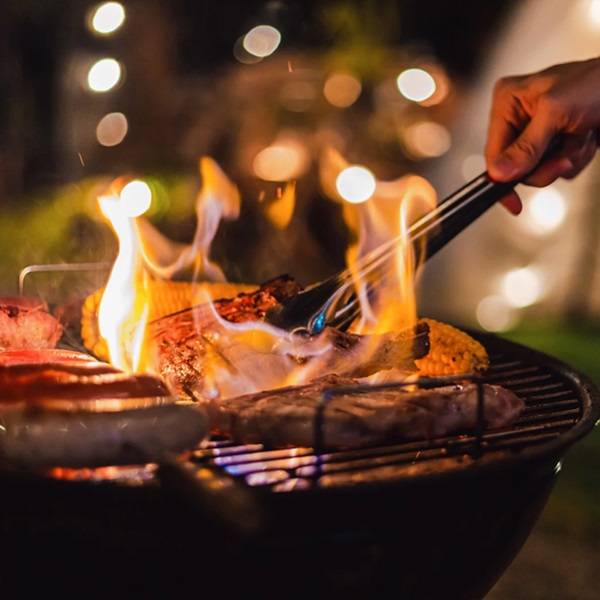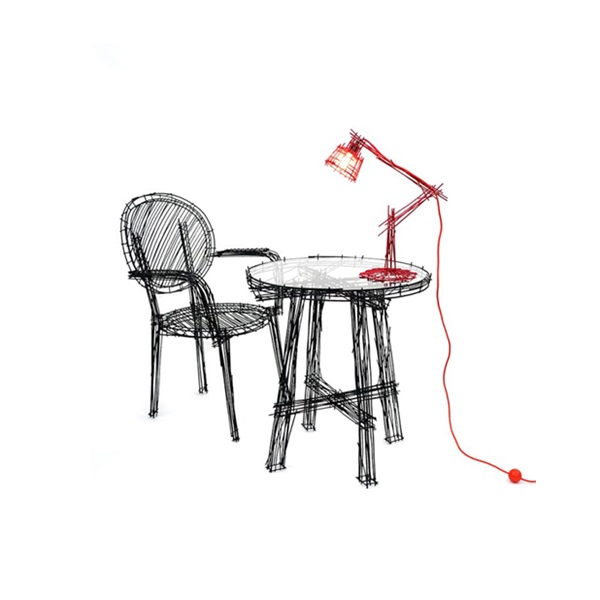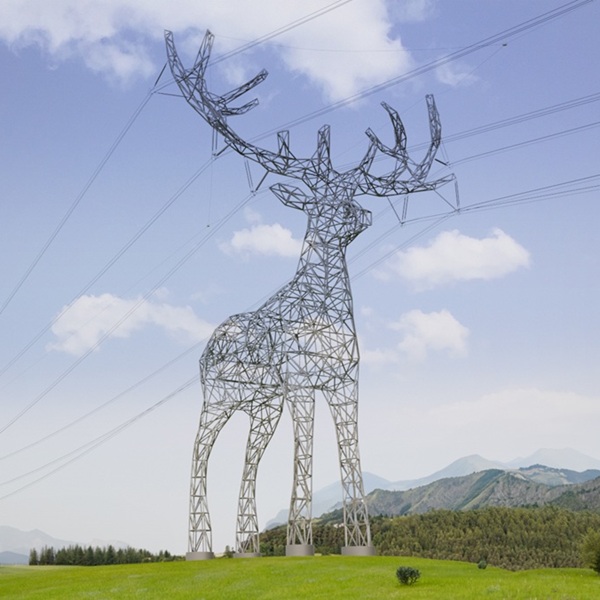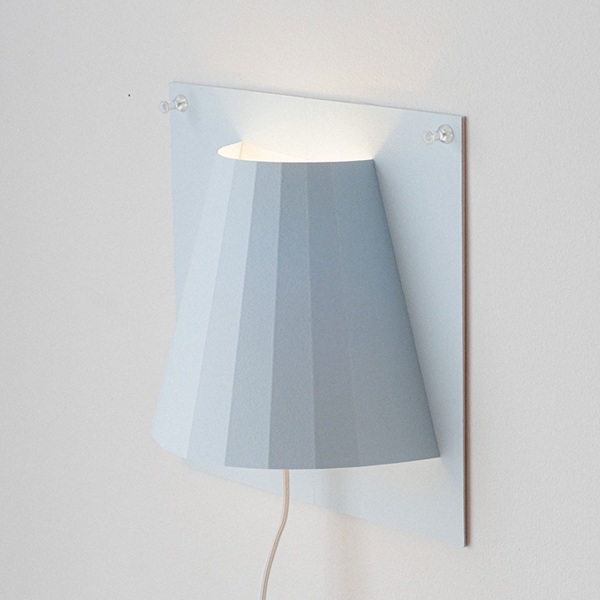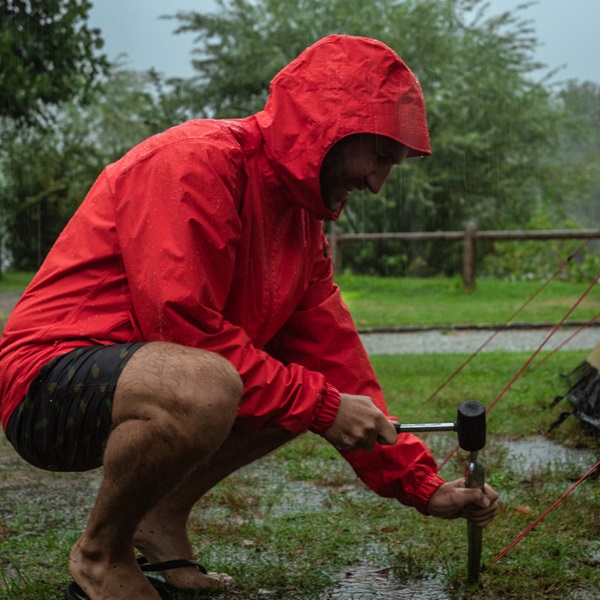
For anyone who enjoys the great outdoors, knowing how to stay safe in a thunderstorm while camping is essential. As thunderstorms can strike suddenly, especially during late spring through early fall, summer is the most dangerous season for campers.
Lightning, strong winds, and flash floods can turn a peaceful campsite into a hazardous environment within minutes. But if you take simple precautions like monitoring weather forecasts, avoiding high ground or isolated trees, etc., you can significantly reduce risks.
In this guide, we collected tips for you to follow.
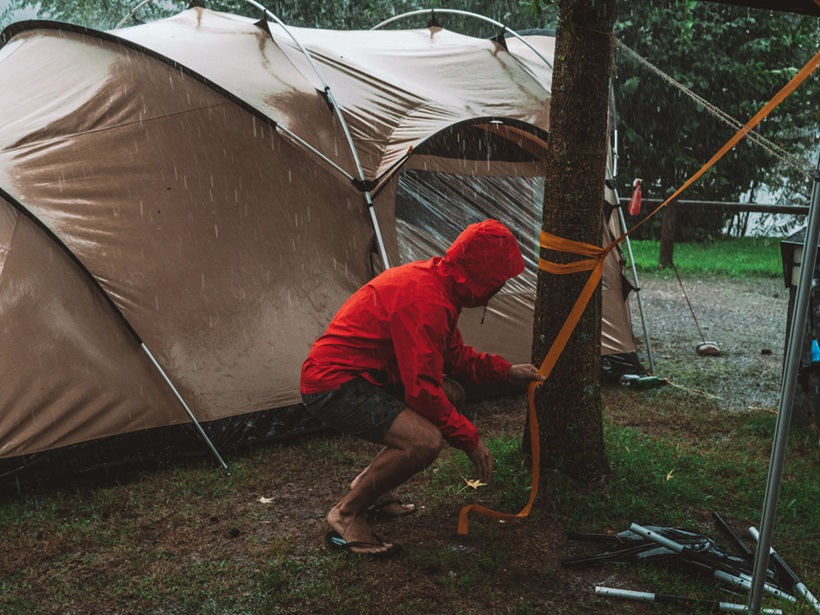
The Best Camping Gear for Thunderstorms
When planning how to stay safe in a thunderstorm while camping, you should know about the right gear that will ensure your comfort. The proper equipment not only helps protect you from lightning, wind, and rain but also ensures you stay as comfortable and prepared as possible during a storm.
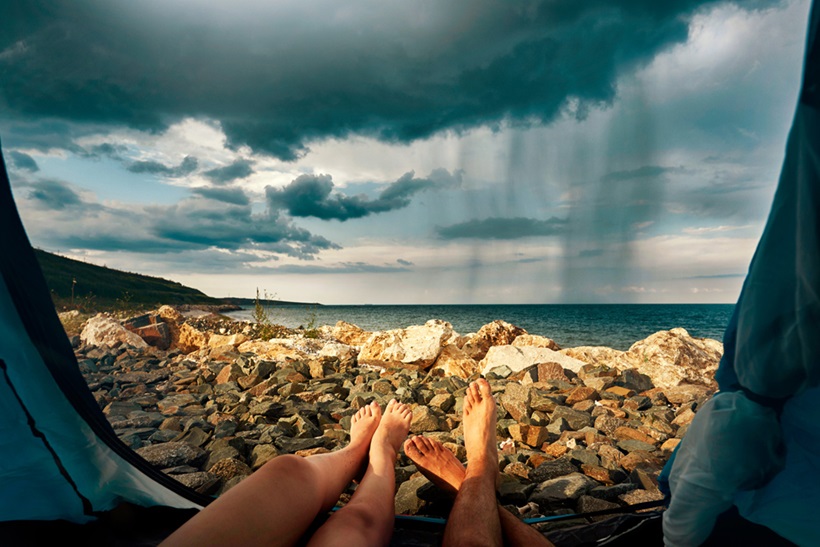
Essential camping gear for thunderstorms can be listed as follows:
- Lightning-proof shelter or tent
- Weather Radio (NOAA Certified)
- Portable power bank
- Heavy-duty rain gear
- Dry bags and waterproof containers
- Ground insulation pad
- Headlamp with extra batteries
- First aid kit
- Emergency blanket or bivvy sack
- Multi-tool or knife
What to Do in a Thunderstorm While Camping?
Taking the right precautions before and during your trip can be just as important as having the right gear. Even though thunderstorms can be unpredictable and dangerous, you can prepare yourself in advance for your safety.
If you wonder how to stay safe in a thunderstorm while camping, keep reading!
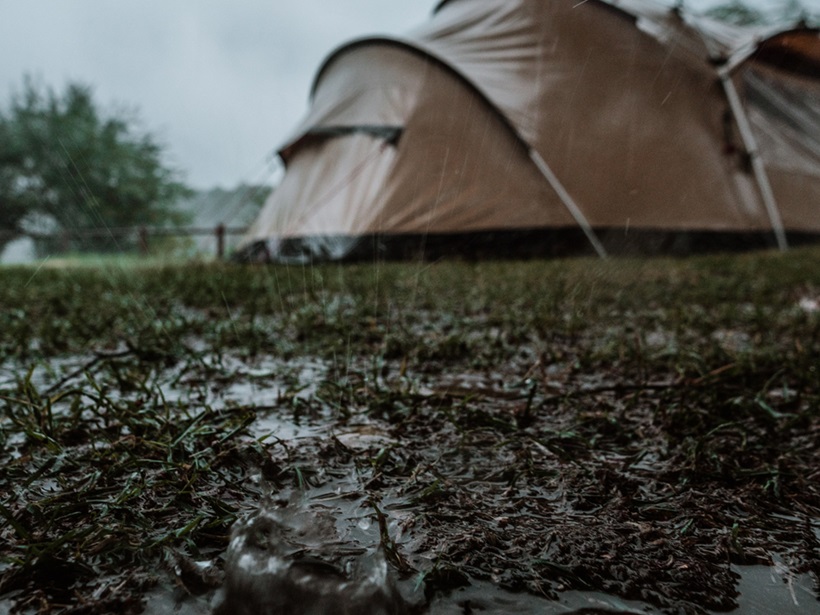
Choose Your Campsite Carefully
One of the most important decisions you will make is to select a safe location for your tent. To reduce the risk of lightning strikes or flash floods, you should avoid exposed ridges, wide open fields, tall isolated trees, and riverbanks.
You can pitch your tent in a low-lying area with natural barriers like shrubs or small hills. But you should not pitch your tent too low, as depressions can flood quickly. Additionally, you can look for established campgrounds that are known for safety and avoid sites directly under large branches that could fall during strong winds.
Check the weather forecast frequently.
Before heading out and throughout your trip, you should regularly check local weather updates using a reliable app, NOAA radio, or park ranger alerts. Even if the sky looks clear, weather in mountainous or forested regions can shift rapidly. Therefore, by staying informed, you can avoid getting caught in a storm or make informed decisions about shelter and travel.
To plan your hikes or outdoor activities around the forecast, you should set weather alerts if your devices allow it.
Have an emergency shelter plan.
The thunderstorm camping checklist includes many simple but effective steps. And an emergency shelter plan is one of them. Even with good planning and following weather forecasts, storms can hit unexpectedly.
For the backup shelter plan, you should know where nearby structures, ranger stations, caves, or vehicle shelters are located. In addition, you should never shelter under a tree or in shallow overhangs.
Lastly, if you are backpacking in remote areas, you should bring a lightweight emergency bivvy or tarp you can quickly set up.
Practice Lightning Safety Position
If you are caught outside with no shelter nearby, you should assume the lightning safety position:
- Crouch low with your feet together.
- Avoid lying flat
- Stay away from metal objects, wet surfaces, and water sources

Avoid Water and Metal During the Storm
Water and metal are excellent conductors of electricity. Therefore, you should stay away from lakes, rivers, and streams. In addition, you should not attempt to cross water during a storm. Likewise, you should avoid holding trekking poles or fishing rods or touching tent poles during lightning activity.
Additionally, you should store metal items like cookware or gear away from your shelter area. On the other hand, if you are in a vehicle, you should stay inside with the windows closed, as vehicles can act as Faraday cages.
Thunderstorm Safety Camping in a Caravan
When a thunderstorm strikes during your camping trip, being inside a caravan or motorhome does offer more protection than a tent—but it’s not entirely risk-free. Many campers assume that being in a vehicle automatically means safety, but certain precautions will help you understand how to stay safe in a thunderstorm while camping in a caravan.
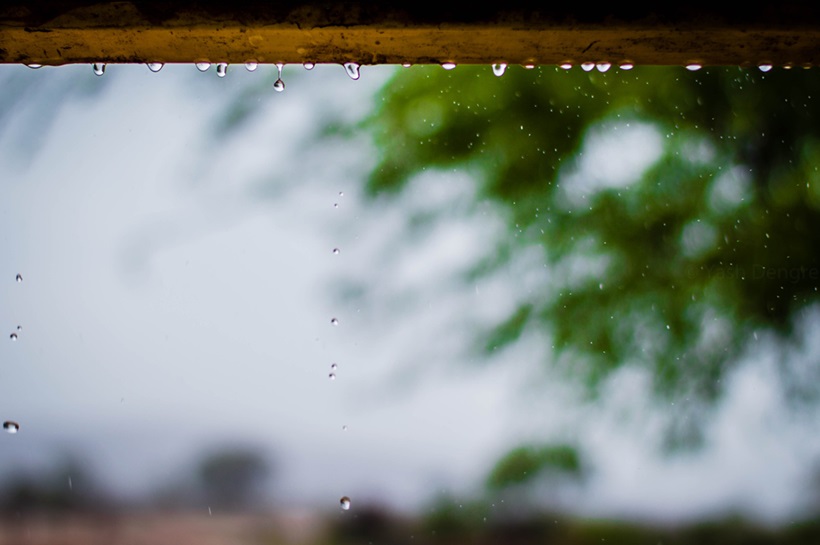
Stay Inside with Doors and Windows Closed
During a thunderstorm, remain inside your motorhome or caravan with all doors, windows, and vents tightly shut. This prevents rain from entering and helps maintain a safe, enclosed environment.
Open windows or vents could allow wind-driven rain or even lightning arcs to enter, especially if the storm is severe. By sealing your vehicle, you minimize the risk of water damage, electrical shorts, or sudden drafts that could tip items over.
Avoid Contact with Metal Fixtures and Appliances
Even though caravans and motorhomes offer partial protection from lightning, metal components inside—like sinks, stoves, and handles—can still conduct electricity.
During a thunderstorm, avoid touching metal surfaces or using wired appliances. Disconnect any unnecessary electronics to prevent electrical surges, and refrain from using the plumbing system. Lightning can travel through pipes and wiring if it strikes nearby.
Unplug Electronics and Power Sources
Power surges caused by lightning can damage electronic devices or even spark fires. As soon as a storm is forecasted or approaching, unplug all non-essential electronics and disconnect from external power hookups (like shore power or generators).
If you’re using a solar power system, consider temporarily isolating it. This will protect your appliances and wiring system from electrical overloads.
Park Away from Trees and Power Lines
Before the storm hits, position your motorhome or caravan in a clear, open space away from tall trees, poles, or overhead wires. Falling branches and power lines pose serious hazards during heavy wind and lightning. Choose a spot with natural wind barriers like low hills or shrubs, but avoid parking at the base of slopes or in flood-prone areas.
Have an emergency kit within reach.
Keep a well-stocked emergency kit inside your motorhome or caravan, and make sure it’s easy to access. This should include a flashlight, fresh batteries, a fully charged power bank, a first aid kit, water, snacks, and a battery-operated weather radio.




